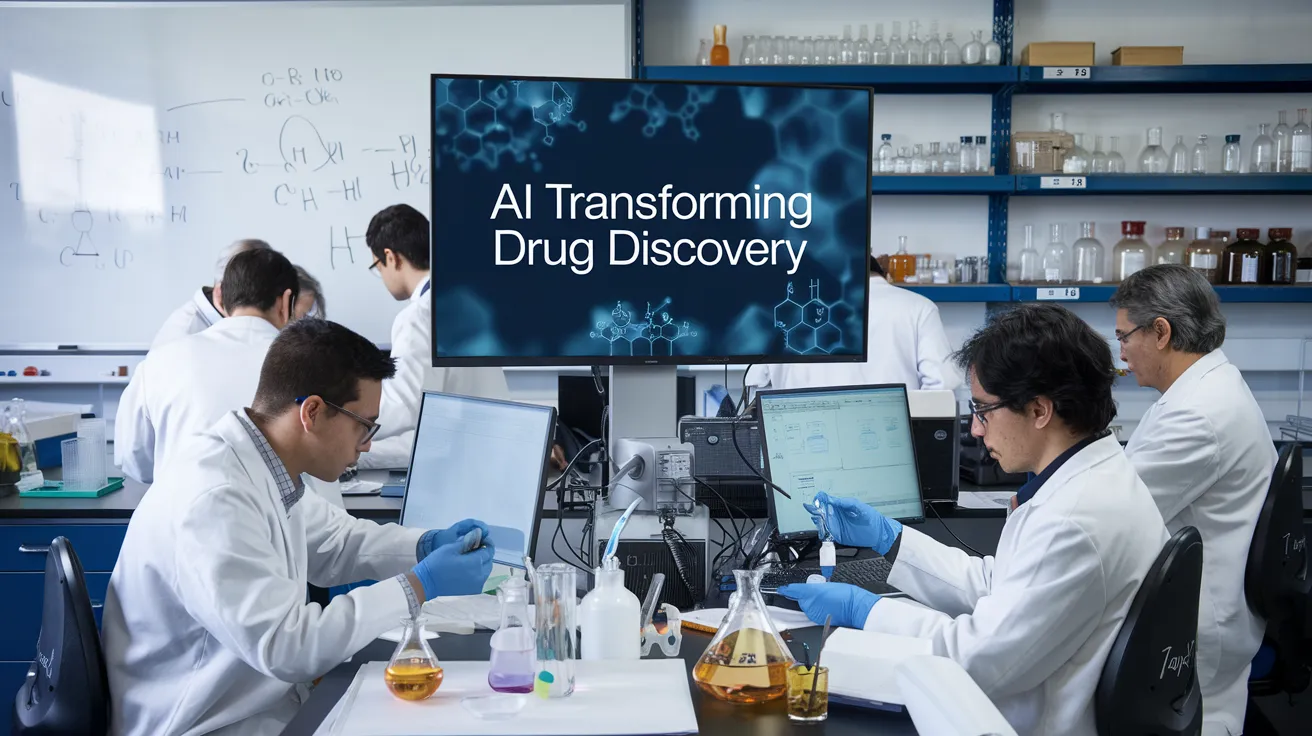AI Transforming Drug Discovery Processes

This article is the fourth in a six-part series exploring how artificial intelligence (AI) is transforming medical research and treatments. In a recent video call, Alex Zhavoronkov, the co-founder and CEO of Insilico Medicine, showcased a small, green, diamond-shaped pill that was developed to address idiopathic pulmonary fibrosis (IPF), a rare progressive lung disease with no known cause or cure.
The Role of AI in Drug Discovery
The novel drug, while still awaiting approval, has shown impressive efficacy in small clinical trials, marking it as part of a new wave of drugs where AI has played a crucial role in discovery. “We can’t say we have the first AI-discovered and designed molecule approved,” Zhavoronkov explains, “but we may be the furthest along the path.” This reflects the growing trend of utilizing AI to perform what has traditionally been the domain of medicinal chemists.
The AI Drug Race
Companies of all sizes are engaging in what has been dubbed the great AI drug race. Smaller, specialist AI-driven biotech firms have emerged over the last decade, while established pharmaceutical companies either pursue AI-driven strategies themselves or partner with these nimble newcomers. Notably, Alphabet, Google’s parent company, launched Isomorphic Labs, an AI drug discovery firm in late 2021. Its CEO, Demis Hassabis, co-shared the Nobel Prize in chemistry this year for a model anticipated to be pivotal in AI drug design.
Accelerating Drug Development
Experts argue that AI’s integration into drug discovery could yield significant benefits for patients. The conventional path of bringing new drugs to market can extend up to 15 years and come with an estimated cost of over $2 billion, with about 90% of drugs failing in clinical trials. The hope is that AI can streamline this process, reducing both time and costs while potentially increasing success rates.
Emergence of New Technologies
Charlotte Deane, a professor of structural bioinformatics at Oxford University, indicates that we are at the dawn of a new era wherein AI will play a central role in drug discovery. As her analysis suggests, savings in the industry may not translate to fewer pharmaceutical scientists, but rather to fewer failed trials, highlighting a paradigm shift towards AI-human collaboration.
Milestones in AI Drug Discovery
A recent Boston Consulting Group (BCG) analysis revealed that at least 75 molecules developed using AI have entered clinical trials, marking a major milestone in the industry. However, defining what constitutes an “AI-discovered” drug remains ambiguous, as human involvement still plays a substantial role in these developments.
AI in Molecular Target Identification
The integration of AI into the drug discovery process is particularly prevalent at two stages: identifying therapeutic targets at the molecular level and designing drugs to correct those targets. Historically, targeting has depended on extensive laboratory experimentation, but AI can mine vast databases to uncover links between molecular biology and diseases.
Generative AI in Drug Design
In the subsequent step, generative AI—similar to the technology behind ChatGPT—envisions molecules capable of binding to the identified targets. This method has the potential to replace the costly manual synthesis of numerous variations, thereby converting a traditionally laborious process into a more efficient operation. For instance, Insilico Medicine has utilized AI across the entire process and has recorded impressive results, with ongoing trials and promising molecules already identified.
Challenges and Future Prospects
Despite AI’s advantages, a lack of baseline data presents a significant challenge that can introduce biases. US-based Recursion Pharmaceuticals is tackling this obstacle by generating vast quantities of relevant data through automated experiments, deploying advanced supercomputing resources to train AI tools and reveal new gene-target relationships.
As Recursion’s co-founder and CEO, Chris Gibson, emphasizes, the crux of success in AI-discovered drugs lies in their ability to navigate clinical trials successfully. Until proven efficacy surpasses conventional methods consistently, the full impact of AI in drug discovery remains to be convincingly demonstrated. Nonetheless, as these innovations continue to unfold, the medical community watches closely, poised for a potentially revolutionary shift in treatments for previously intractable diseases.